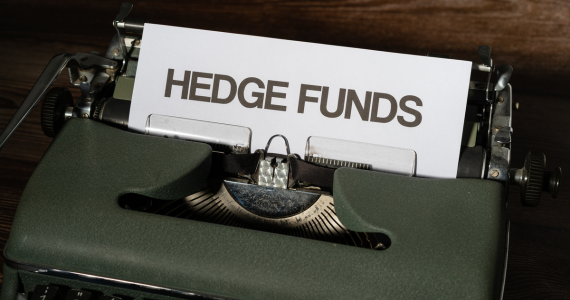Use the new First Home Super Saver Scheme (FHSS) to save your first home deposit faster
If you’re saving for a deposit on your first home, the Federal Government’s First Home Super Saver Scheme (FHSS) could help you reach your target sooner, by allowing you to save for your deposit inside your super.

A government initiative introduced in late 2017, the FHSS Scheme is aimed at helping first home buyers save for their first home. The FHSS allows individuals to access certain eligible voluntary contributions made to their super fund, taking advantage of the concessional tax treatment of investment returns within super. The program functions as a way of helping Australians onto the property ladder.
Essentially, while earnings on investments – such as interest earned on savings account balances – in your own name are taxed at your marginal tax rate (which may be up to up to 47%), earnings on investments in your super fund accumulation account are eligible for a concessional tax rate of 15%.
FHSS benefits
-
Investment returns outside super – Marginal tax rate (may be up to 47% including Medicare levy).
-
Investment returns inside super – Taxed only up to 15%.
How does the FHSS work?
The FHSS allows you to withdraw eligible voluntary contributions made into your super account (from 1 July 2017). You can contribute up to $15,000 per year, and $30,000 in total under the Scheme. You can then withdraw eligible contributions to use specifically for a first-home deposit. You can only make a withdrawal from 1 July 2018.
You’ll also be able to access associated earnings (calculated by the ATO based on a set rate1) on eligible contributions that you withdraw. Depending on market conditions, your super savings may earn more than they would in a regular savings account. You’re also likely to save on tax.
Eligible contributions include:
-
salary sacrifice contributions
-
personal contributions
-
voluntary employer contributions (does not include mandatory employer contributions such as Super Guarantee).
Contributions must be made within the existing concessional and non-concessional caps.2 The type of voluntary contributions you make into super will affect the maximum release amount. You can withdraw 100 per cent of your eligible non-concessional (after-tax) contributions and 85 per cent of eligible concessional (pre-tax) contributions.
Who is eligible for the FHSS?
To be eligible for the FHSS Scheme, you need to be able to answer yes to the following:
-
You’ve never owned any property in Australia – this includes an investment property, commercial property, a lease of land in Australia, or a company title interest in land in Australia.
-
You’re not using FHSS amounts to purchase the following type of property: any premises not capable of being occupied as a residence, a houseboat, a motor home, or vacant land.
-
You’ve not previously requested a FHSS release authority.
-
You’re aged 18 years or older (at the time of withdrawal).
Eligibility is assessed on an individual basis. This means if you’re a couple or you’re looking to purchase a property with a sibling or a friend you can pool your funds, as long as you all can meet the requirements. For more information on eligibility, visit the ATO’s page on the FHSS Scheme.
Withdrawing your funds
From 1 July 2018, you can apply to withdraw eligible contributions, along with any associated earnings, for the purchase (or construction) of your first home.
Earnings are calculated by the ATO, opens in new window based on a formula, rather than actual earnings on these amounts in your fund.1
You can apply for the release of voluntary contributions up to a maximum of $15,000 from any one financial year and $30,000 in total across all years.
Certain components of the total amount released to you will be subject to tax. Generally this will include any concessional contributions released, plus total associated earnings. These assessable components will be taxed at:
-
your marginal tax rate less a 30% offset, or
-
17% if the Commissioner is unable to estimate your expected marginal rate.
Your summary will show the amount of tax withheld for you to include in your tax return for the year you request the release.
As well as meeting the terms above, you must:
-
occupy (or intend to occupy) the property as soon as it’s practical to do so, and
-
live in the property for at least six of the first 12 months you own it (from when it’s practical to do so).
In most cases, you need to purchase the property within 12 months of having the funds released to you.
If you don’t use the funds for the above purpose, you will either need to contribute the funds back to super as a non-concessional contribution, or pay additional tax.
It is important to understand that, if after you make eligible voluntary contributions, your intentions change, and you no longer intend to purchase a home, you won’t be able to access the funds you contributed until you meet a ‘condition of release’. Based on current law, this is unlikely to occur until you reach age 65, or retire after reaching your preservation age (see ATO, opens in new window website for more information).
Case study: Michelle and Nick
Michelle earns $60,000 a year and wants to buy her first home. Using salary sacrifice, she annually directs $10,000 of pre-tax income into her superannuation account, increasing her balance by $8,500 after the contributions tax has been paid by her fund. After three years, she is able to withdraw $25,758 of contributions and deemed earnings on those contributions. Her withdrawal is taxed at her marginal rate (including Medicare levy) less a 30% offset.
If Michelle had instead deposited these amounts (net of PAYG tax) into a savings account in her name earning 2%, she would have had approximately $6,239 less to use as a deposit at the end of the same three year period.3
Make sure your nominated super fund or funds will release the money – some super funds, including defined benefit and constitutionally protected funds, may not. You should also check whether you’ll have to pay any fees or charges.
1 Deemed rate of return is based on the 90-day Bank Bill rate plus three percentage points
2 The concessional contribution cap for 2018/2019 is $25,000 for all Australians. The annual non-concessional contribution cap is $100,000. Your non-concessional cap is nil for a financial year if you have a total superannuation balance greater than or equal to the general transfer balance cap ($1.6 million in 2018–198) at the end of 30 June of the previous financial year. ato.gov.au
3 These estimated outcomes have been modelled using the online Government estimator, accessed on 8 May 2018. Actual returns and relative outcomes may differ depending on performance of markets and deposit products.
Source: NAB
Reproduced with permission of National Australia Bank (‘NAB’). This article was originally published at https://www.nab.com.au/personal/life-moments/home-property/buy-first-home/super-saving
National Australia Bank Limited. ABN 12 004 044 937 AFSL and Australian Credit Licence 230686. The information contained in this article is intended to be of a general nature only. Any advice contained in this article has been prepared without taking into account your objectives, financial situation or needs. Before acting on any advice on this website, NAB recommends that you consider whether it is appropriate for your circumstances.
© 2023 National Australia Bank Limited (“”NAB””). All rights reserved.
Important:
Any information provided by the author detailed above is separate and external to our business and our Licensee. Neither our business nor our Licensee takes any responsibility for any action or any service provided by the author. Any links have been provided with permission for information purposes only and will take you to external websites, which are not connected to our company in any way. Note: Our company does not endorse and is not responsible for the accuracy of the contents/information contained within the linked site(s) accessible from this page.”


